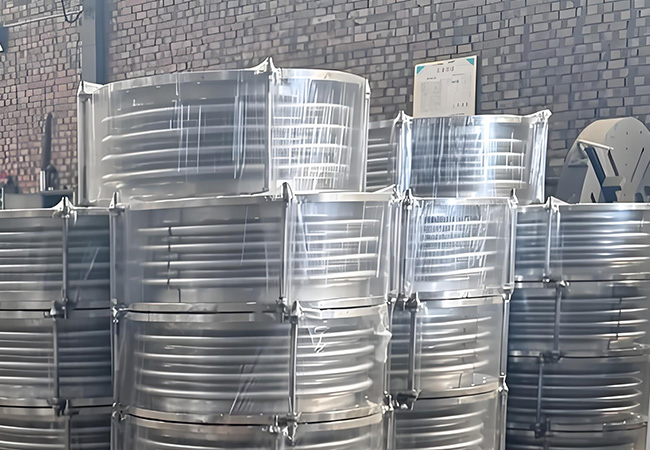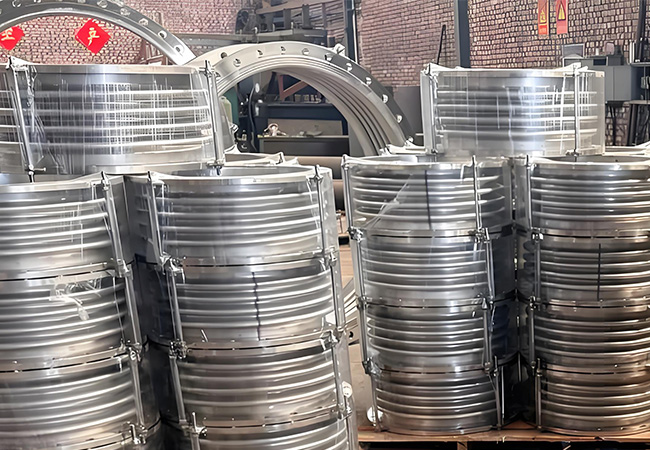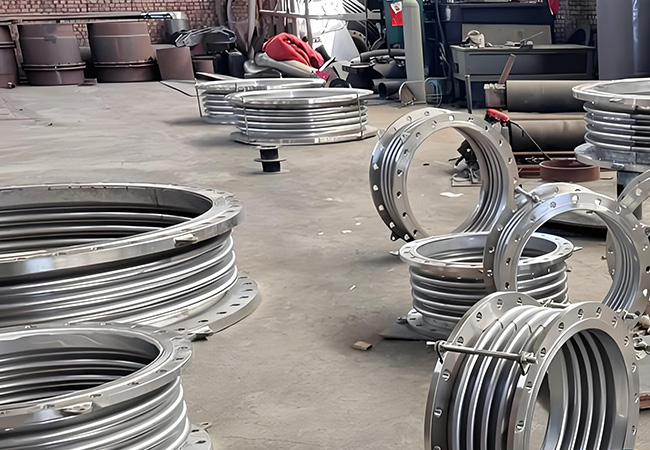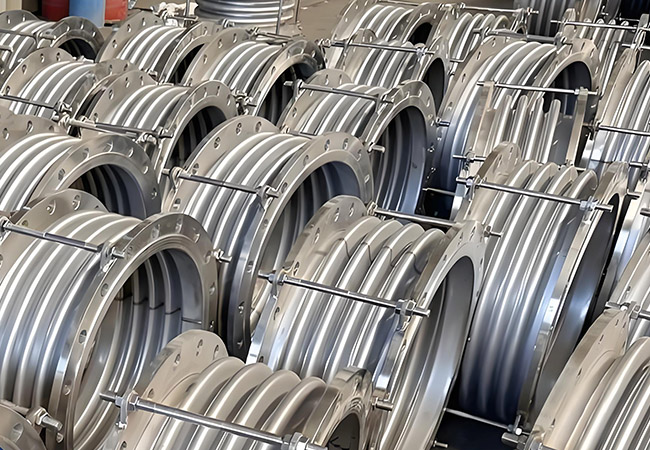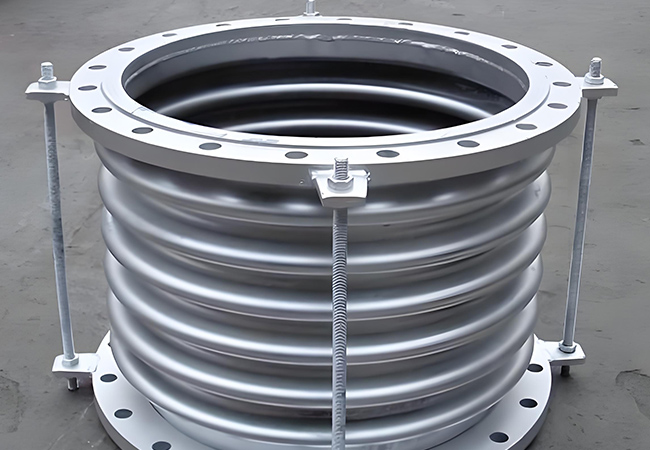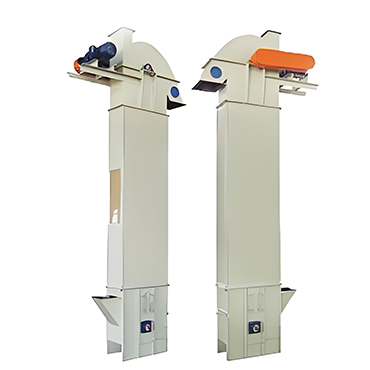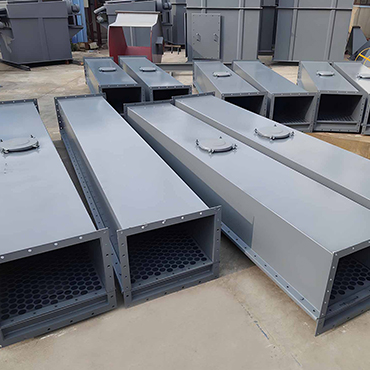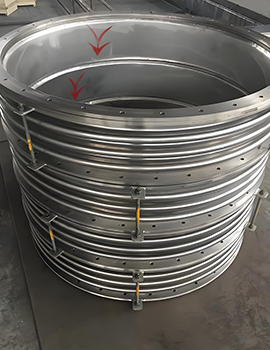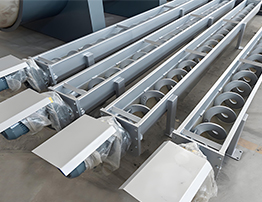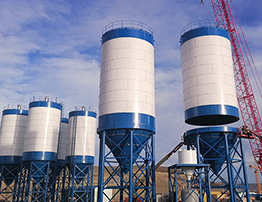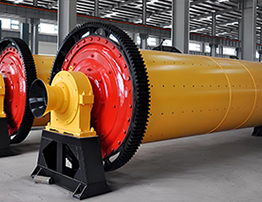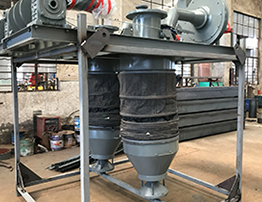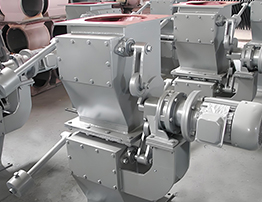Expansion Joints
Expansion Joints (also known as Compensators) are critical components in pipeline systems designed to absorb thermal expansion, mechanical vibration, and ground settlement. Our product range includes various materials such as metallic, rubber, and fabric types, suitable for pipeline connection systems in industries like petrochemical, power generation, HVAC, and marine, ensuring safe operation under temperature fluctuations and pressure variations.
- Superior Compensation Capability
- Extended Service Life
- Wide Pressure Adaptability
- Customized Designs
- Easy Installation
Core Functions
Expansion joints (compensators) are critical flexible connectors in industrial piping systems. They perform three core functions through the elastic deformation of metal bellows or non-metallic flexible elements:
Precisely compensate for axial/lateral/angular displacement caused by thermal expansion, mechanical vibration, or foundation settlement;
Balance internal pressure thrust through unique structural designs to protect pipe supports;
Effectively isolate equipment vibration transmission, reducing noise and extending system service life.
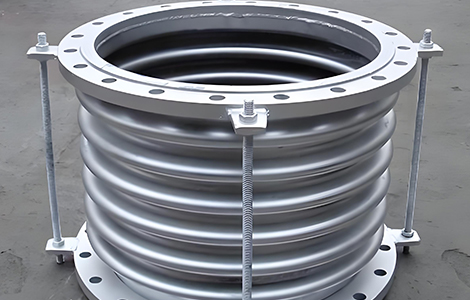
Related Conveying Equipment
Vertically lifts bulk materials efficiently using a continuous chain of containers.
Horizontally transports bulk goods continuously over long distances at high capacity.
Gently moves fine powders using aeration to create a fluid-like conveyor.
- Product Types & Selection Guide
- Technical Specifications
- Industry Applications
- Key Advantages
We offer 8 core types of expansion joints tailored to different movement directions, pressure balance requirements, and applications:
1. By Function
(1) Metallic Expansion Joints
| Type | Movement Direction | Key Features | Typical Applications |
|---|---|---|---|
| Single Axial Expansion Joint | Axial movement | Absorbs compression/extension only | Steam pipelines, straight chemical pipes |
| Single Hinged Expansion Joint | Single-plane angular | Allows angular deflection, partial thrust balance | L/Z-shaped pipe layouts |
| Single Gimbal Expansion Joint | Multi-directional angular | Universal ring for 3D angular compensation | Marine pipelines, complex petrochemical lines |
| Universal Expansion Joint | Multi-directional | Dual-hinge design, large compensation capacity | Power plant ducts, long-distance pipelines |
| Tied Double Expansion Joint | Lateral + axial | Tie rods balance internal pressure thrust | High-pressure lateral displacement |
| Double Hinged Expansion Joint | Angular + axial | Symmetrical hinges for combined movement | Bridges, tank inlet/outlet pipes |
| Double Gimbal Expansion Joint | Omni-directional | Full 3D spatial compensation | Offshore platforms, aerospace fuel lines |
| Elbow Pressure Balanced Joint | Axial/angular | Self-balancing thrust, no external supports | High-pressure pump/boiler outlets |
(2) Non-Metallic Expansion Joints
-
Rubber Expansion Joints: Corrosion-resistant, vibration-damping for HVAC/chemical pipelines.
-
Fabric Expansion Joints: High-temperature resistant (≤500°C), lightweight for power plant ducts.
(3) Architectural Expansion Joints
-
For bridges, high-rise buildings, subways to prevent concrete cracking.
| Parameter | Metallic Expansion Joints | Non-Metallic Expansion Joints |
|---|---|---|
| Material | Stainless steel (304/316), carbon steel | EPDM/NBR rubber, fluoropolymer, fiber fabric |
| Temperature Range | -200°C ~ +1000°C | -50°C ~ +500°C |
| Pressure Range | Vacuum to 10MPa+ | 0.1~2.5MPa |
| Movement Capacity | Axial/lateral/angular | Multi-directional flexibility |
| Connection Type | Flange/welded/threaded | Flange/clamp |
-
Petrochemical: FCC unit pipelines (Recommended: Elbow Pressure Balanced).
-
Power Generation: Gas turbine exhaust (Recommended: Double Gimbal Joint).
-
Construction: Skyscraper movement joints (Recommended: Stainless steel + seismic design).
✅ Precision Matching: 8 types cover all industrial needs.
✅ High Durability: Metal bellows ≥5000 cycles; rubber joints ≥10-year lifespan.
✅ Cost Efficiency: Reduces pipe stress damage, cuts maintenance costs by 50%+.
✅ Global Certifications: ISO 9001, PED 97/23/EC, ASME B31.3 compliant.
Working Principle of Expansion Joints
Expansion joints utilize flexible components (such as metal bellows, rubber, or fabric) to actively absorb axial/lateral/angular displacement in piping systems caused by thermal expansion, mechanical vibration, or foundation settlement. Their core mechanisms operate in three ways:
-
Displacement Compensation – Bellows compress/extend or hinges rotate to relieve pipe stress;
-
Force Balancing – Pressure-balanced structures (e.g., elbow or tie rods) counteract internal pressure thrust;
-
Vibration Isolation – Non-metallic materials dampen mechanical vibrations.
For example, in steam pipelines, metal bellows compress when heated and rebound when cooled, maintaining a tight seal while protecting pipe anchors from damage.
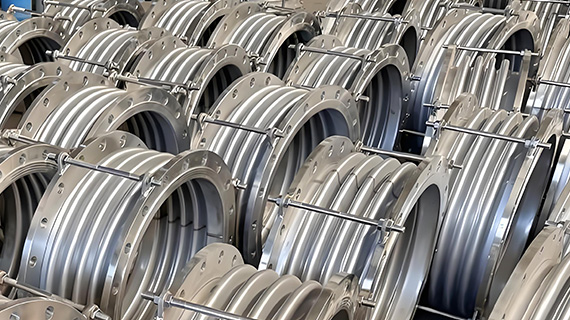
Related Products
Selection Guide
❓ How to choose?
-
Axial movement dominant → Single Axial or Tied Double Joint.
-
Angular + thrust balance → Single Hinged/Gimbal Joint.
-
Complex 3D movement → Double Gimbal Expansion Joint.
-
High-pressure thrust balance → Elbow Pressure Balanced Joint.
❓ Need pressure balancing?
-
For high-pressure systems (≥1.6MPa), prioritize Elbow Pressure Balanced or Tied Double Joint to avoid thrust damage.
Expansion joints (or compensators) are designed to absorb thermal expansion, vibration, and movement in pipelines, ducts, and structures. They prevent stress buildup, leaks, and damage caused by temperature changes, pressure fluctuations, or mechanical shifts.
-
Metallic joints (stainless steel, carbon steel) are ideal for high-pressure, high-temperature applications (e.g., steam pipes, refineries).
-
Non-metallic joints (rubber, fabric) excel in corrosion resistance, noise reduction, and lower-pressure systems (e.g., HVAC, chemical ducts).
Pressure-balanced types (e.g., elbow pressure balanced, tied double joint) are critical for high-pressure systems (≥1.6MPa) where internal thrust could damage pipes or anchors. Common in boiler outlets, pump connections, and large pipelines.
Yes! Universal joints (dual-hinge) or tied double joints compensate for lateral + axial displacement. For pure lateral movement, consider single hinged or gimbal designs.




